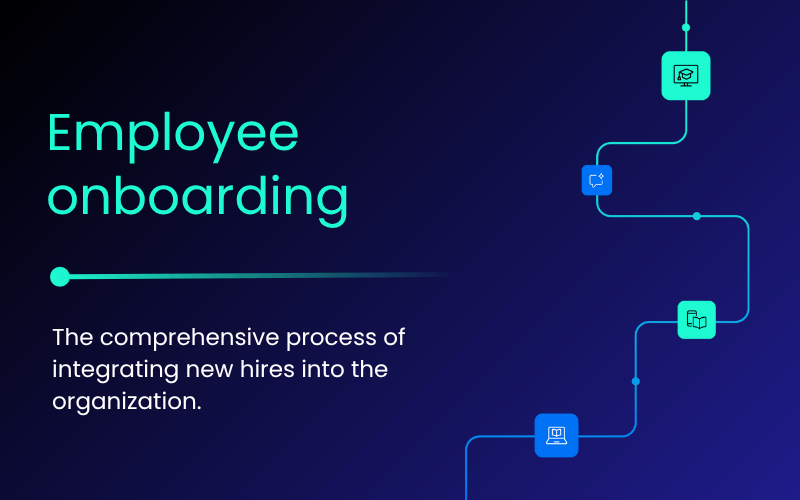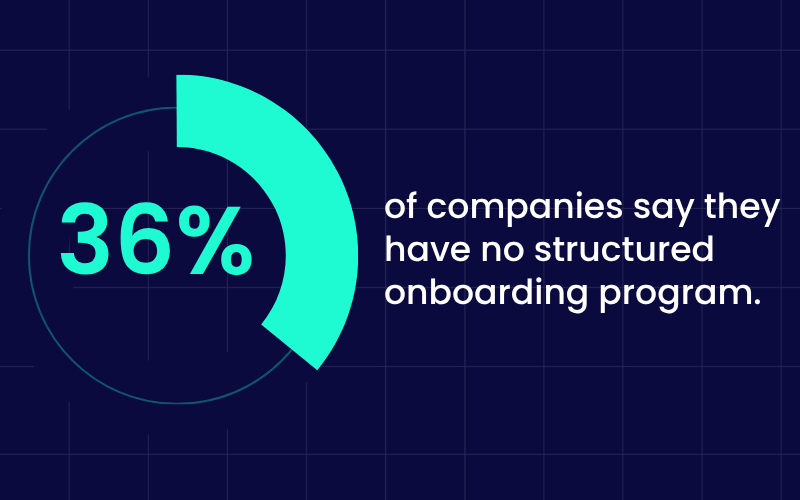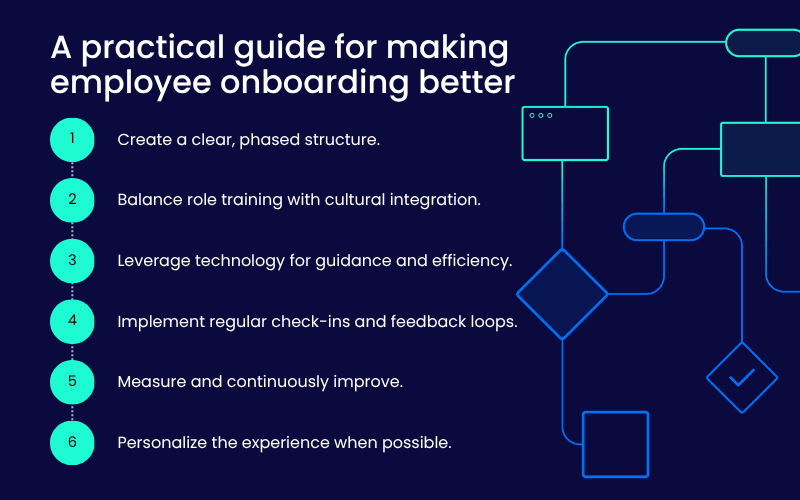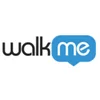Starting a new job is exciting and terrifying at the same time. New employees want to make a good impression, understand their role, and fit in with their team, but they’re also worried about making mistakes, asking too many questions, or discovering the job isn’t what they expected. While some first-day anxiety is inevitable, the onboarding process itself can be designed to build confidence and set people up for long-term success.
The challenge is that many organizations treat onboarding as an administrative checklist rather than a strategic opportunity to engage and retain talent. When new hires are left to figure things out on their own or overwhelmed with information dumps, even the most promising employees can struggle to find their footing.
What is employee onboarding?

Employee onboarding is the comprehensive process of integrating new hires into the organization, covering everything from paperwork and system access to cultural integration and role-specific training. It typically includes:
- Orientation to company culture, values, and organizational structure
- Administrative setup including benefits enrollment and system access
- Role-specific training and introduction to team members and processes
- Ongoing check-ins and support during the first weeks and months
While this sounds straightforward, effective onboarding requires balancing practical job requirements with emotional and social integration. When new employees feel welcomed, prepared, and supported, they’re more likely to become engaged, productive team members.
The challenges
For most organizations, the biggest hurdle is the lack of structured approach to onboarding. Without clear processes, new hires often receive inconsistent experiences—some get comprehensive support while others are left to navigate on their own. This variability creates uncertainty and makes it difficult to predict or improve outcomes.
Traditional onboarding approaches compound the problem. Information dumps in the first few days overwhelm new employees without giving them time to absorb and apply what they’ve learned. Manual processes consume HR time while providing little ongoing support, and the lack of measurement makes it difficult to identify what’s working and what needs improvement.
It’s no surprise that 36% of companies say they have no structured onboarding program. Without intentional design and consistent execution, organizations miss critical opportunities to engage new talent and set them up for success from day one.

The Solution: WalkMe
This is where digital adoption platforms like WalkMe become game-changers.
Rather than overwhelming new employees with static training materials or leaving them to figure out complex systems alone, these platforms provide contextual guidance directly within the tools they need to use. WalkMe, specifically, offers step-by-step workflows, interactive tutorials, and real-time support that helps new hires become productive and confident more quickly.
The results speak for themselves: organizations with effective onboarding programs report up to 82% higher retention and 70% higher productivity. But implementation success depends on following proven best practices.
A practical guide for making employee onboarding better

- Create a clear, phased structure
Structured onboarding ensures every new hire receives consistent support and information. Rather than cramming everything into the first week, effective programs spread learning over time, allowing new employees to absorb and apply knowledge gradually while building confidence.
- Balance role training with cultural integration
Successful onboarding addresses both the practical aspects of the job and the human side of joining the organization. New employees need to understand their responsibilities, but they also need to feel connected to the company’s mission, values, and team dynamics.
- Leverage technology for guidance and efficiency
Digital platforms like WalkMe can provide step-by-step guidance within workplace tools, reducing confusion and accelerating learning. This technology-enabled approach can significantly reduce HR administrative time while providing more consistent, accessible support for new hires.
- Implement regular check-ins and feedback loops
Onboarding doesn’t end after the first week or month. Regular check-ins help identify challenges early, provide ongoing support, and demonstrate continued investment in new employees’ success. This sustained attention contributes to higher satisfaction and retention.
- Measure and continuously improve
Track key metrics like employee satisfaction, time-to-productivity, and retention rates to understand onboarding effectiveness. Use this data to refine processes, identify pain points, and ensure the program evolves to meet changing needs and expectations.
- Personalize the experience when possible
While structure is important, effective onboarding also recognizes that different roles, backgrounds, and learning styles may require tailored approaches. Flexible programs that can adapt to individual needs while maintaining core consistency tend to be most successful.
Putting it all together
The combination of these strategies creates a comprehensive onboarding ecosystem. When implemented effectively with platforms like WalkMe, HR teams can deliver consistent experiences, track new hire progress, and continuously refine the process based on real feedback and outcomes.
Although companies spend thousands on each new hire, many still underinvest in systematic onboarding approaches. WalkMe bridges this gap by ensuring new employees receive the guidance and support they need to become productive and engaged team members from the start.
What success looks like
When employee onboarding is done well, the benefits are clear:
- Employee satisfaction scores rising above 4 out of 5
- First-year retention improving by 4.1% or more
- Faster time-to-productivity and stronger early performance
- Reduced HR administrative burden and improved efficiency
Organizations that invest in structured onboarding create lasting impact that extends far beyond the first few weeks. When new hires feel welcomed, prepared, and supported from day one, they’re more likely to become engaged, long-term contributors who strengthen the entire organization. As companies like Hitachi have demonstrated by cutting onboarding time by four days and reducing HR effort from 20 to 12 hours per hire, the right combination of structure and technology transforms onboarding from an administrative burden into a strategic advantage.

